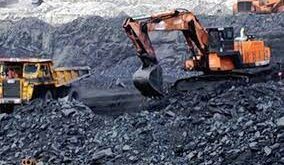A 25-year supply contract has been signed with Italy. and the first Azeri gas is expected to start flowing before the end of 2020. said Vitaly Baylarbayov. deputy vice president of SOCAR. the State Oil Company of Azerbaijan.
The construction of the so-called “Southern Gas Corridor“. a chain of pipelines linking Azrbaijan to Italy. has cost $40 billion and the project is “almost ready.“ Baylarbayov told EURACTIV in an interview.
During the last eleven years. Vitaly Baylarbayov has been in charge of the Southern Gas Corridor (SGC). an EU-supported project aimed at bringing gas to Europe from the Caspian Sea. providing an alternative to Russian gas.
Speaking on the 34th floor of the SOCAR tower in Baku. Baylarbayov said that problems which had arisen in the past have been overcome and that the entire project was now close to completion.
The Southern Gas Corridor’s main source of supply is the Shah Deniz field. located in the economic zone of Azerbaijan in the Caspian Sea. The project consists of three pipelines with a total length of almost 4.000 km: The South Caucasus Pipeline (SCP) linking Azerbaijan with Georgia. the Trans-Anatolian Pipeline (TANAP) across Turkey. and the Trans-Adriatic pipeline (TAP) linking Greece. Albania and Italy with an offshore section.
The total cost for the entire Southern gas corridor is close to $40 billion. the SOCAR executive said. adding that “substantial savings“ were made during the works in Azerbaijan and Turkey. Previous estimations had put a pricetag of $45 billion for the entire project.
According to Baylarbayov. onshore work is 100% complete in Azerbaijan and Georgia. and that the TANAP section on Turkish territory is also 100% completed.
Fourteen wells have been drilled in the Shah Deniz gas field and are now fully operational. he said. explaining that gas will start flowing at full capacity once works on the final stretch of the Italian pipeline is completed.
“The only remaining part of the corridor is TAP. the readiness of which is 91%.“ the SOCAR executive said.
Most sensitive 8 kilometers
But this last 8 km stretch on Italian territory is also the most sensitive politically. The local population have resisted the pipeline. fearing for their pristine beaches and tourism industry.
According to Baylarbayov. a micro-tunnel allowing the pipeline to avoid the beach of San Foca. the landing point in southern Italy. has now been completed. The conservative timing to make TAP operational was the end of 2020 – possibly earlier than that. he said.
“Whatever we do on the territory of Italy is done with the absolutely highest level of environmental precaution. which is not less strict on the territory of Azerbaijan. Georgia. Turkey and Greece.“ the executive insisted.
What could still delay construction were new archaeological discoveries. he explained. Multiple sites were discovered during the construction phase of the pipeline in Turkey and Greece. Whenever this happened. work was stopped and the authorities were invited to step in. Baylarbayov explained.
Regarding the volumes of gas expected in each section of the pipeline. Baylarbayov said Turkey started receiving gas from 1 July 2018. About 2 billion cubic meters (bcm) were delivered in 2018. a figure that was doubled in 2019. For this year. volumes are expected to reach about 6 bcm. he said.
Furthermore. 2 bcm have been earmarked for Greece and Bulgaria. The volumes will be delivered once TAP enters operation. and when the Greece-Bulgaria interconnector is completed. by the end of 2020.
The SOCAR executive explained that the entire TAP system will be made operational in one go. For Italy. supplies are earmarked at 8+bcm y. he said.
“All the buyers are lined up. waiting for the supplies. Hopefully there will be no further obstacles.“ he said.
Is TurkStream a competitor?
There are still question marks over the future economic viability of the Southern gas corridor. One of the first is potential competition from TurkStream. a Gazprom-led project aimed at bringing Russian gas to Europe via Turkey and the Black Sea.
But Baylarbayov shrugged off those doubts. saying the answer to that question. frequently asked by journalists. was no.
“Our volumes. contracted by Italy for 25 years. will start arriving in Italy as soon as TAP is ready. This cannot be changed. Whether there will be Russian. Libyan. Algerian or any other gas. it doesn’t matter. because we secured our own place.“ he said.
He also dismissed questions about whether Italy actually needs more gas. given the current supply glut on the market and EU efforts to reduce fossil fuel consumption.
“We understand that Italy will need more gas in the next 10 years. much more than they have now. From that point of view. the capacity of the Southern gas corridor and its TAP leg is sufficient to cover this potential deficit“.
Baylarbayov was also affirmative about the capacity of the 14 wells drilled in the Shah Deniz field to supply the 8 bcm y for Italy plus the 2 bcm y for Greece and Bulgaria. As production declines over time. other wells will be drilled. he said.
The Azeri executive wasn’t too worried about cheap American LNG flowing on European markets. saying nobody could predict price trends. Using China as an example. he said the recent coronavirus outbreak had depressed oil prices as a result of the slowdown of Chinese consumption.
“The US administration recently threatened that Rosneft might become subject of sanctions because of their involvement in Venezuelan affairs. If they will do that. prices will jump up.“ he said to illustrate his point.
Turning to the long-term. Baylarbayov admitted that demand for fossil fuels would diminish because of Europe’s push to cut carbon emissions. But the picture is different for natural gas. he added. saying gas will still be needed for another 50 years at least. And as time goes by. gas will become cleaner. with less methane being vented or leaked out of pipelines and production wells. he assured.
More gas from Central Asia?
Baylarbayov also seemed relaxed about the possibility that gas-rich Turkmenistan starts building an offshore pipeline with the aim of delivering gas to Europe. In that case. Azerbaijan would simply become a transit country for Central Asian gas. be it from Turkmenistan or Kazakhstan. he said.
“The capacity of the system allows that. The capacity of SCP and TANAP is expandable at least until 31 bcm. and this is commercially and legally expandable without additional negotiations with host countries. The capacity of TAP can be doubled. increase by another 10 bcm and the same goes for TANAP and SCP. It could be increased even further. but that would require negotiations with the host countries.“
Can Russian gas flow via SGC?
But what if Russia’s Gazprom asks to use TAP’s capacity to transport its own gas? After all. EU rules require any pipeline to reserve capacities for other suppliers. EURACTIV asked.
According to Baylarbayov that would not upset TAP’s plans. of which SOCAR is a 25% shareholder. “We. as TAP shareholders. will of course recommend the strict compliance with European regulations. which is currently based on the Third Energy Package. Whatever is envisaged for the third parties should be granted to the third parties.“ the SOCAR official said.
Although sensitive. the question of third party access is not unexpected. In the summer of 2019. TAP launched a market test which is expected to determine how much capacity gas producers want. and when. After information is collected. TAP will state what are its scenarios for future development. Baylarbayov explained.
“Only at that stage we will now whether the Russians want to be part of TAP. with 50%. or more. or less percentages of its expandable capacity. which is 10 bcm. At that point in time. under the strict guidance of the European rules. we will decide what and how will be implemented.“ the executive said.
 Iran Energy News Oil, Gas, Petrochemical and Energy Field Specialized Channel
Iran Energy News Oil, Gas, Petrochemical and Energy Field Specialized Channel



